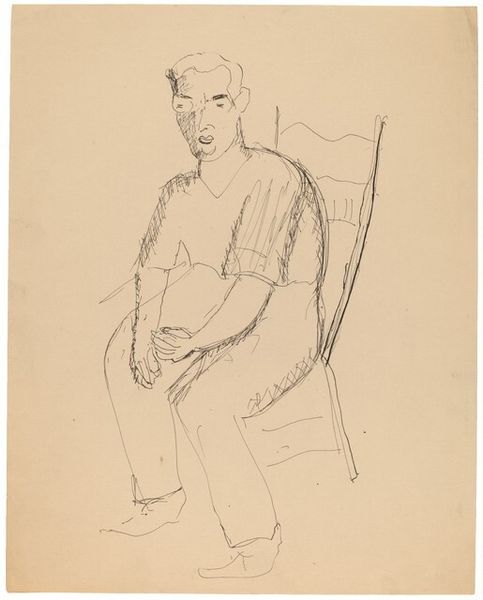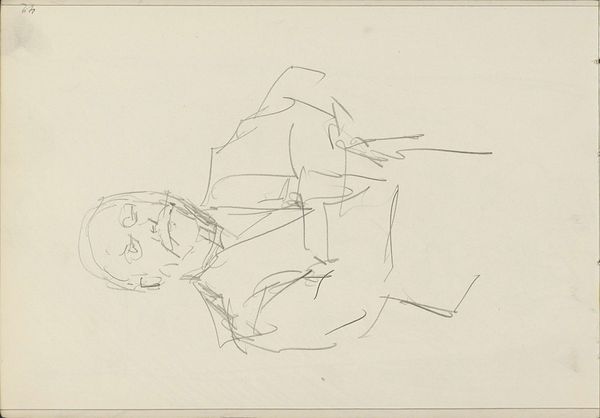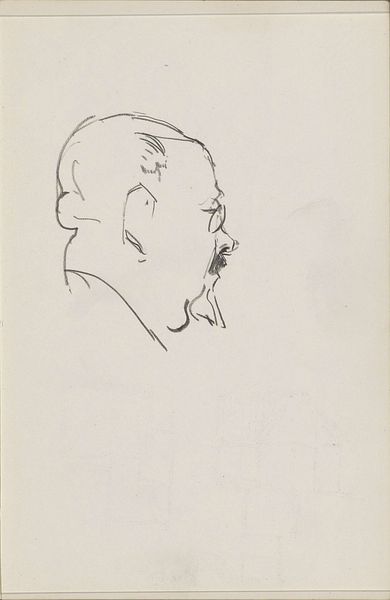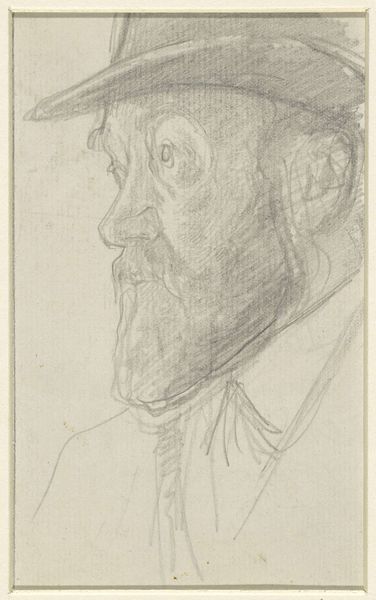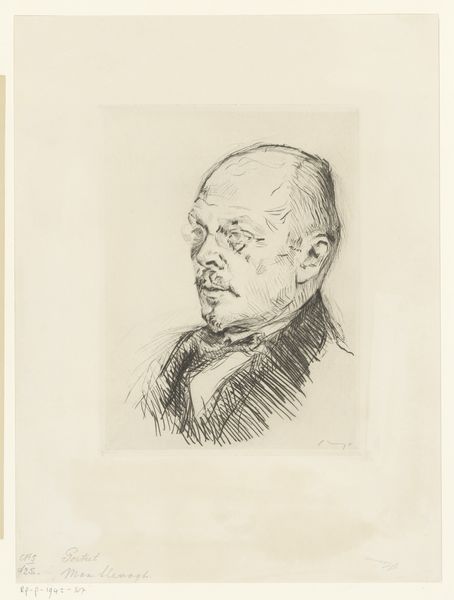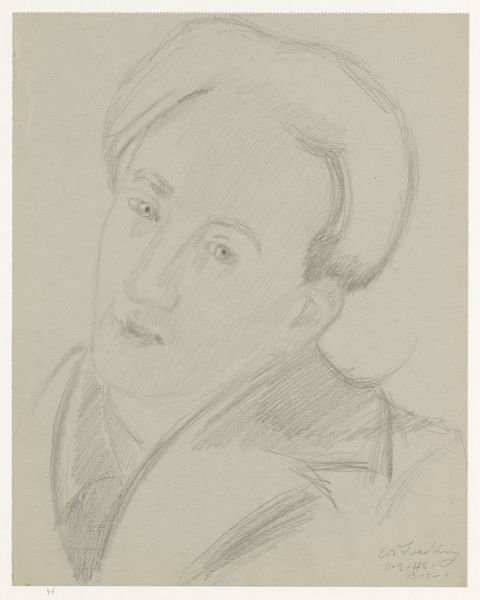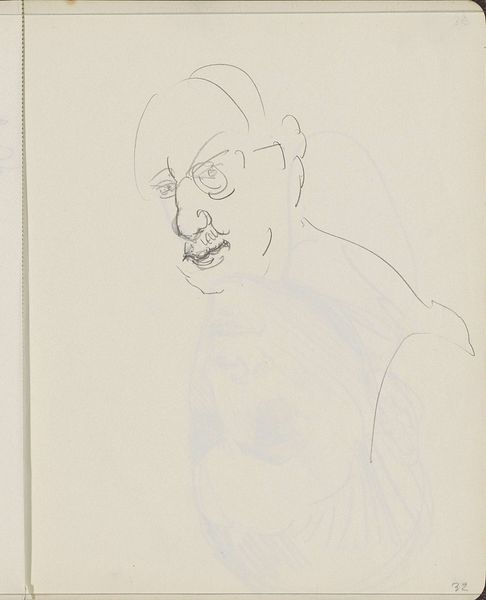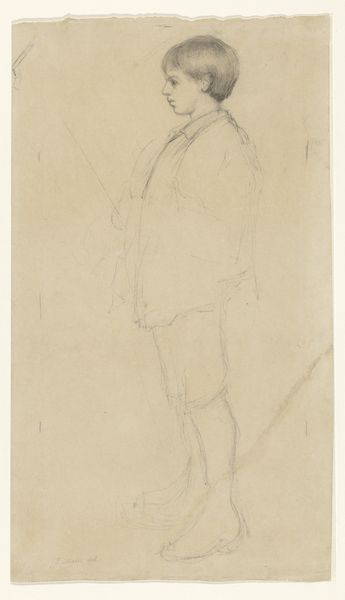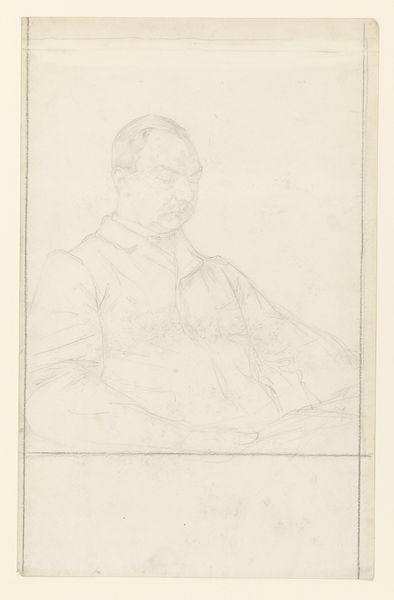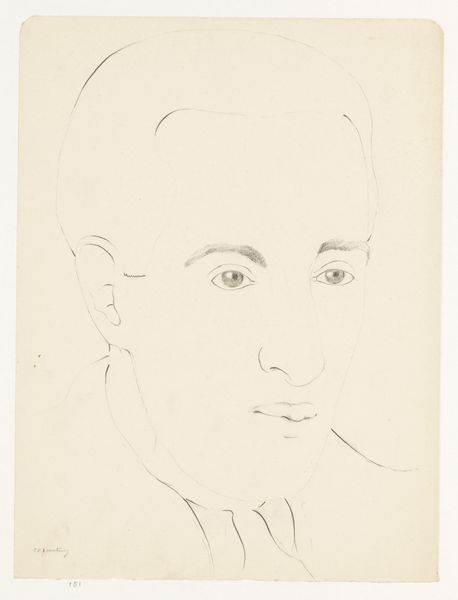
drawing, pencil
#
portrait
#
17_20th-century
#
drawing
#
self-portrait
#
pencil sketch
#
german-expressionism
#
pencil drawing
#
pencil
#
expressionism
#
portrait drawing
Copyright: Public Domain
Editor: This is Max Beckmann’s "Portrait of Georg Swarzenski," around 1921, a pencil drawing now residing at the Städel Museum. The sketchy lines create an unfinished quality. It makes me wonder if it's just a preliminary study. What catches your eye about this portrait? Curator: Well, as a historian, I see this sketch as more than just a preparation piece. It offers insights into the social milieu of Frankfurt in the early 1920s. Swarzenski, the museum director at the time, was a key figure in promoting modern art, including Beckmann’s, despite facing considerable resistance from conservative factions within the city. This drawing speaks to their relationship. Editor: So, the simple lines and raw style could be interpreted as a sign of a particular artistic relationship? Curator: Precisely. It's less about refined technique and more about capturing the essence of a man who significantly impacted Beckmann's career and the broader cultural landscape. It asks us to consider the political power dynamics at play within institutions and how those dynamics shaped the opportunities for artists working at the time. Think about how Expressionism challenged traditional values and the kind of figures that either supported or condemned this departure. Who had the social or financial means to do either? Editor: That context really changes how I view it. I thought it was just a quick study. But now I understand that the choice of materials and how finished (or unfinished) it looks says a lot about Beckmann and Swarzenski’s environment and their social roles. Curator: Exactly. We often underestimate how cultural contexts shape the seemingly simple artistic decisions. It reminds us that the most seemingly "simple" piece has stories to tell about social issues and political views of the time. Editor: I'll definitely keep that in mind. I thought all I was looking at was someone's lack of skills! Curator: And I, likewise, now consider its aesthetic presence more, understanding it not only as an artistic portrayal but also as a complex interplay of visual and social commentary.
Comments
No comments
Be the first to comment and join the conversation on the ultimate creative platform.
